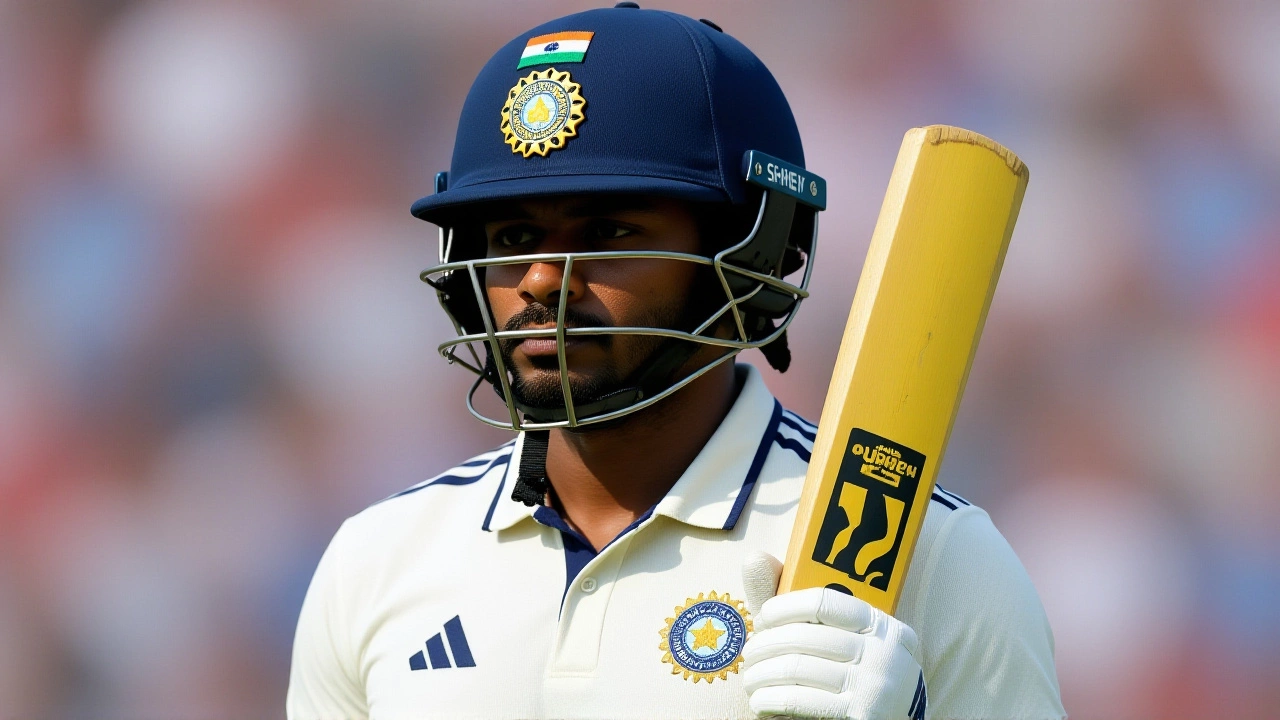Assistant Coach Warns Sai Sudharsan: Perform or Lose Spot, Karun Nair Looms

When Team India took the field for the second Test against West Indies at the Arun Jaitley Stadium on October 10, 2025, the pressure wasn’t just on the pitch—it was in the dressing room too. Assistant coach Ryan Ten Doeschate had already delivered his message: Sai Sudharsan had one game to prove he belonged. After scoring just 7 runs in the first Test in Ahmedabad, the 22-year-old opener was staring down the barrel of being dropped—again. And the warning? It came with a name: Karun Nair.
"You’re Not Immune to the Cutthroat Reality"
At a press conference in Delhi on October 9, Ten Doeschate didn’t sugarcoat it. "You’re not in a bubble," he said. "You’ve seen what happened to Karun Nair. He played four Tests in England. Good player. Solid technique. But he couldn’t convert starts. And the competition? It’s ruthless."
That wasn’t just a reminder—it was a history lesson. Nair, once hailed as India’s next big thing after his 303 against England in 2016, vanished from the Test side for nearly nine years. He returned on the 2024 England tour, played six innings, and scored 131 runs at an average of 21.83. His dot-ball percentage? A staggering 73.8—the third highest in his batting position. That’s not patience. That’s paralysis.
Now, Ten Doeschate is making it clear: Sai Sudharsan is on the same tightrope. His first-class average of 39.93 looks impressive on paper. His IPL 2023 Orange Cap win with Gujarat Titans (779 runs) screams potential. But Test cricket doesn’t care about T20 fireworks. It demands endurance, temperament, and the ability to grind out 50-plus scores when the pressure is on.
"We Believe in Him. But Belief Needs Proof."
Team management isn’t abandoning Sudharsan. Far from it. Ten Doeschate emphasized they still have faith. "We know he’s talented. We know he’s got the tools. But talent without runs is just noise."
He called Sudharsan’s dismissal in Ahmedabad a "possibly tactical error"—a poor shot outside off-stump when he should’ve defended. "We expected him to anchor. He didn’t. That’s not about skill. That’s about mindset."
Meanwhile, captain Shubman Gill has been deliberately vague about the No. 3 slot. After Virat Kohli and Rohit Sharma retired, Gill moved to No. 4. That leaves a void. And the door? It’s wide open—for anyone who can step up.
India won the first Test by 368 runs. But that’s not the story anymore. The story is: Sai Sudharsan is the only player in the squad whose place isn’t just uncertain—it’s conditional. And the clock is ticking.
Who’s Waiting in the Wings?
Let’s not pretend Nair is the only option. Former wicketkeeper Deep Dasgupta publicly backed Sudharsan weeks ago, saying, "It’s time to give him a run." But now, even Dasgupta might be reconsidering.
Behind the scenes, the BCCI has been monitoring two other names: Yashasvi Jaiswal, who’s been in red-ball form for Uttar Pradesh, and Abhimanyu Easwaran, the veteran with 14 centuries in first-class cricket. Neither has been called up yet. But if Sudharsan fails again, they’re next on the list.
Nair’s return isn’t guaranteed. He hasn’t played first-class cricket since March. But if he’s fit, and if Sudharsan gets out cheaply again, Nair’s name will be whispered in selection meetings. And in Indian cricket, whispers become orders.
Why This Matters Beyond One Batting Spot
This isn’t just about one 22-year-old. It’s about what Indian cricket has become: a meritocracy with no safety nets.
Remember how Sachin Tendulkar, Rahul Dravid, and VVS Laxman held their spots for years? Those days are gone. Today, you’re only as good as your last innings. The IPL has created a generation of explosive hitters—but Test cricket rewards the quiet, the consistent, the mentally tough.
When Ten Doeschate said, "Everyone here is fighting for their place," he wasn’t being dramatic. He was describing reality. In the last five Tests against England, India rotated five different openers and three middle-order batsmen. No one held their spot. Not for long.
That’s the new normal. And for Sudharsan, it’s make-or-break time.
What’s Next?
The second Test begins October 10 in Delhi. If Sudharsan scores 50 or more, he likely keeps his place. If he gets out for under 20? The selectors will have to decide: give Nair another shot, or promote Jaiswal from the reserves.
And if Sudharsan fails again? Don’t be surprised if he’s sent back to the domestic circuit—again. His IPL success won’t save him here. Only Test runs will.
Frequently Asked Questions
Why is Karun Nair being mentioned as a replacement for Sai Sudharsan?
Karun Nair is being referenced because he’s a recent example of a talented Indian batsman who lost his Test spot after failing to convert starts. Though he scored a triple century in 2016, his 2024 England tour average of 21.83 and high dot-ball rate (73.8%) showed he couldn’t adapt to Test conditions under pressure. His return to the squad is unlikely unless Sudharsan fails again, but he remains a symbolic warning of what happens when potential doesn’t translate to performance.
What are Sai Sudharsan’s actual stats compared to other Indian batsmen?
Sudharsan has a first-class average of 39.93 across 29 matches and scored 779 runs in IPL 2023. But in Tests, he’s averaged just 3.50 from two innings. Compare that to current openers like Shubman Gill (avg. 56.4 in Tests) or even Yashasvi Jaiswal (avg. 44.1 in Tests). The gap isn’t just in runs—it’s in consistency under pressure. His IPL success doesn’t automatically translate to red-ball cricket, which demands patience and adaptability.
Why didn’t Team India pick a more experienced batsman for No. 3?
After Kohli and Sharma retired, India opted to blood young talent rather than rely on aging veterans. The selection committee has been clear: they want to build for the next 5-7 years. Players like Abhimanyu Easwaran and Yashasvi Jaiswal were considered, but Sudharsan was chosen for his aggressive yet technically sound approach. The gamble was that his IPL form would carry over. So far, it hasn’t.
Is Ryan Ten Doeschate’s warning unusual for Indian cricket?
Not really. Former coaches like Ravi Shastri and Rahul Dravid have publicly pushed players to perform, especially in the post-Kohli era. What’s different now is the transparency. In the past, such warnings were private. Ten Doeschate’s public remarks signal a new culture: accountability over sentiment. It’s a sign that Indian cricket is evolving into a results-driven environment, not one based on reputation or past glory.
What happens if Sai Sudharsan scores a century in the second Test?
If Sudharsan scores a century, he’ll likely keep his place for the next Test series—possibly against Australia or South Africa. It would silence critics and validate the selectors’ faith. More importantly, it would give him the mental edge to handle future pressure. But it’s not a lifetime pass. In today’s Test cricket, one big score doesn’t guarantee security. He’d need to follow it up with two more 50+ scores in the next three innings to truly secure his spot.
Could this situation affect other young Indian players?
Absolutely. Players like Yashasvi Jaiswal, Yuvraj Chaudhary, and even 18-year-old Shubham Dubey are watching closely. If Sudharsan is dropped after one poor game, it sends a message: no one is safe. That’s motivating for some, terrifying for others. But it also raises the standard. In a country where cricket is religion, this kind of pressure is becoming the norm—not the exception.
